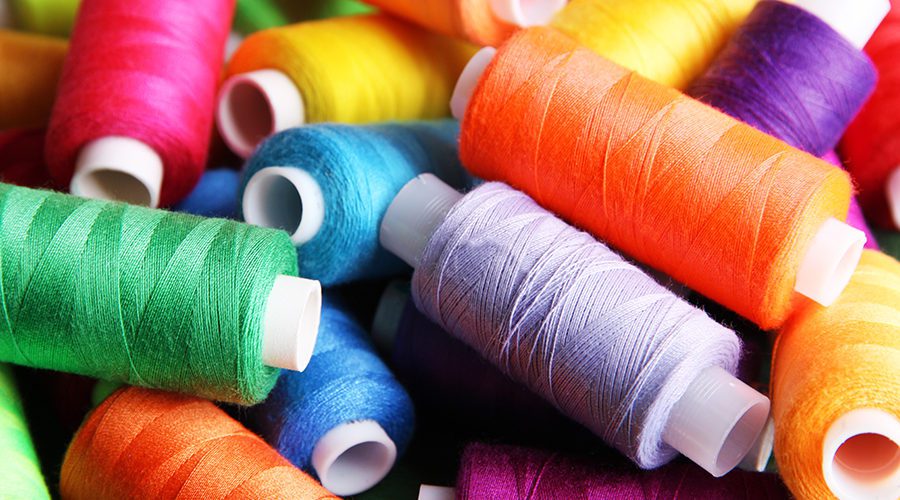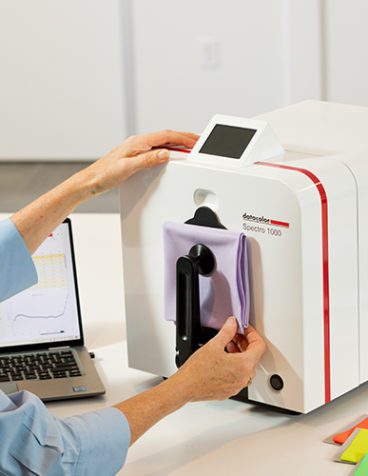This is the final blog by Dwight Davis, Datacolor Regional Sales Manager, in our series about finding the right tools for digital color management. In this series, we covered how to begin your search, making the business case for color management, the different types of color measurement instruments and more. Our goal is to help you make the best decision possible for your company’s needs.
Whether you’re investing in digital color technology for the first time or you’re upgrading your existing tools, there’s a lot that goes into getting it right. So far, we’ve talked about:
Now, we’re talking about what happens after you purchase color measurement equipment. How do you set yourself up for success so you get the most out of your new technology?
Getting Your Company Ready for Install
Your color management manufacturer can provide any documentation and specifications for your computers so you’re ready to go once your instruments arrive.
You also want to review your current standard operating procedures (SOPs) for color evaluations. Understanding that color begins with raw materials and ends with the final product, how are you measuring that and controlling color in each phase of the production process. You want to have clearly documented SOPS for the entire process, including when raw materials come in, your manufacturing process, and quality control of your outgoing products.

The Importance of Training
This is the most important thing that should happen after you’ve purchased a new solution. If you’re going to make a big investment in technology, you don’t want to fall short on training. You’ll want to work with a company that has a deep understanding not just of the technology itself, but how to use it most effectively in your industry. You also want the support of a team that can go beyond the instrument itself and help you streamline your color management process as a whole.
Training is especially important if you’re just getting started with digital color management and have a team accustomed to visual matching. This can include in-depth education to make sure everyone is set up for success.
But I also recommend training if your team has used color technology before. You likely won’t start from scratch, but an overview of all new features of your instruments and software is essential. If you’re switching from a different manufacturer, this training should cover the differences from what your team is used to.
In both cases, you’ll want to cover color management best practices and user tips for the software and instrument. For those that are new to digital color management, assigning our color management fundamentals e-books is a great place to start.

Keys to Successful Color Management Training
Over the years, I’ve discovered a few things that make training successful:
- Always include the person who will train your staff. Ideally, this will be a department manager, or someone else who is invested in building a career at your company long-term. Always having to re-train your trainer can be costly.
- Keep each training to three employees or fewer. This will be your trainer and two operators. I’ve been in trainings with four or five or even eight people and it’s not as productive. Since you’re going over critical details that require one-on-one attention, keeping the group size small will ensure everyone knows what they need to know at the end of the training.
- Split your training sessions. At Datacolor, training always starts by going over the instrument operation before going into the base functionality of the software. However, after two hours of software training, your team will likely be feeling some information overload. That’s why I recommend scheduling the second session two or three weeks later. In between, keep a pen and paper next to your computer and instrument so your team can list every question they run into.
- Resist calling after every question. As your team adjusts to a new way of working, there are bound to be questions. I recommend accumulating a minimum of seven to 10 before calling your manufacturer to review them. Or, wait until the next training to discuss in a group setting. Odds are, your team will answer their own questions as they spend more time with the technology. In my experience, this is the best way to learn and reinforce the information — even better than having someone show you how to do it.
- Lean on Your Color Management Manufacturer for Support. If you don’t have team members in house (and even if you do), we’ll help ensure the smoothest set-up possible. Our global applications, service and support teams know all the ins and outs of our color solutions. Together, they have more than 700 years of color management experience and are dedicated to helping customers in every industry succeed.
Our 80-person Service and Support team is available to answer questions and help you troubleshoot — long after initial set-up. Across the world, they handle over 25,000 service requests each year for thousands of Datacolor customers.
If you have a question about equipment or processes, I can almost guarantee Service and Support have solved it before. This includes everything from re-training when new team members come on board to support with ongoing maintenance, such as calibration, installing updates to your systems, or even adding new instruments to your fleet. Our goal is to keep your color program running efficiently for many, many years after that initial investment.







